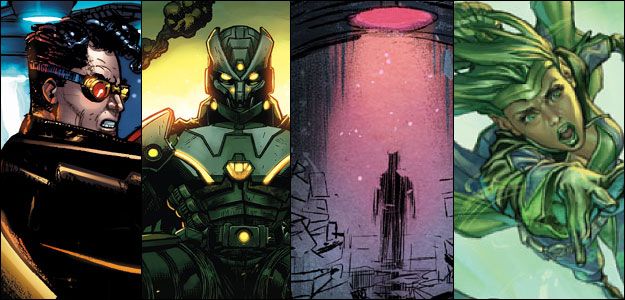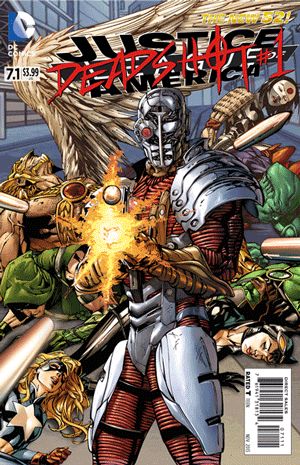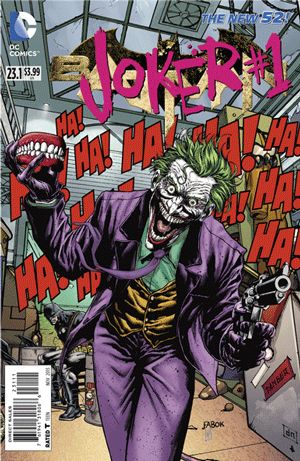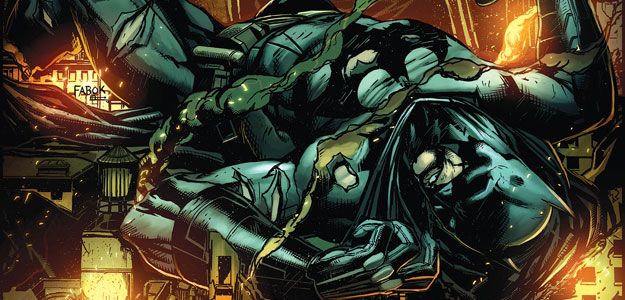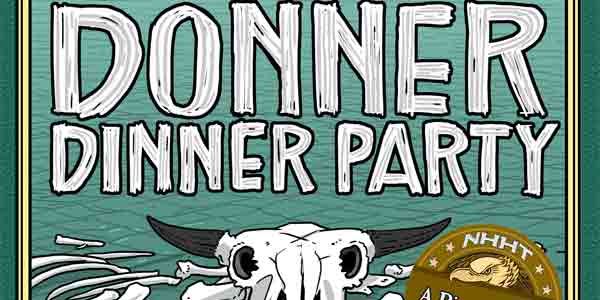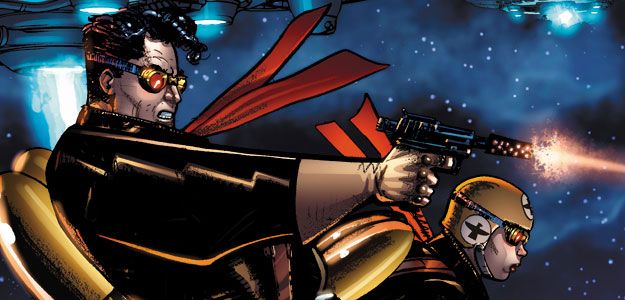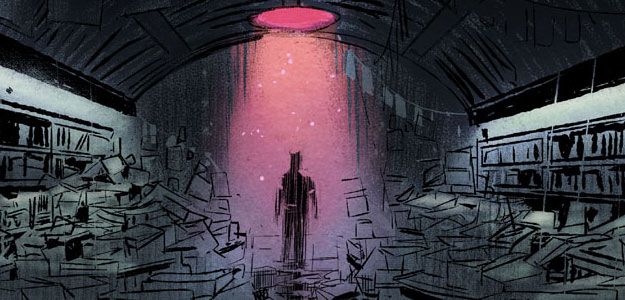Welcome to “Report Card,” our week-in-review feature. If “Cheat Sheet” is your guide to the week ahead, “Report Card” is typically a look back at the top news stories of the previous week, as well as a look at the Robot 6 team’s favorite comics that we read.
So find out what we thought about The Bunker, Detective Comics, X-Factor and more.
Just a few weeks before their September "Villains Month" comics are scheduled to arrive in shops, DC Comics announced that they will allocate issues to retailers. The comics, which were solicited to cost $3.99 and feature a 3-D lenticular cover, will now also be available in a "2-D" format that will cost $2.99. DC Comics said the allocations will range from about 50 percent to nearly 100 percent on different titles, and are based on an average of the retailer's orders of each Villains Month titles’ base title over the past few months.
“Because of the time needed to create the 3-D motion covers, we were forced to set September print runs much further in advance than we normally would,” said Dan DiDio, DC Entertainment co-publisher. “As we got close to the [Final Order Cutoff] dates, even though we were very aggressive with our sales forecasts for the 3-D editions, it was clear that orders for these issues were going to be greater than the quantities we had printed. Once we saw from the first 3-D edition FOCs that we were oversold on initial orders, we decided to institute a system across the entire 3-D line that was in accord with previous retailers’ ordering patterns to minimize the impact of fringe speculators.”
Both Brian Hibbs, owner of Comix Experience in San Francisco, and Leo McGovern, manager of Crescent City Comics in New Orleans, offer their opinions on the announcement and how it will likely effect them and their customers.
The Second Circuit Court of Appeals upheld a 2011 ruling that Jack Kirby’s contributions to Marvel Comics in the 1960s were work for hire, and therefore not subject to copyright reclamation by the artist’s heirs. The appellate court vacated the New York district judge’s summary ruling against two of Kirby’s children, California residents Lisa and Neal, on jurisdictional grounds; the judgment against Susan and Barbara stands.
The Second Circuit also upheld the lower court’s exclusion of testimony offered by John Morrow and Mark Evanier on behalf of the Kirby heirs, agreeing that “their reports are by and large undergirded by hearsay statements, made by freelance artists in both formal and informal settings, concerning Marvel’s general practices towards its artists during the relevant time period.”
July proved to be the "second-best month for comics sales in [the] 21st century," according to comics sales analyst John Jackson Miller. He noted that "the comics shop market enjoyed its best summer month in the Diamond Exclusive Era in dollar terms, ordering more dollars worth of comics and trade paperbacks in the month of July than it has in all but one month since 1997."
Superman Unchained #2 topped the charts in January, followed by Batman #22, Guardians of the Galaxy #5, Justice League #22 and Batman Annual #2. The second collection of the Matt Fraction-written Hawkeye series topped the graphic novel chart, followed by volume five of Dark Horse's Avatar: The Last Airbender and the first two volumes of Saga. Overall the comics shop market is up 12.71 percent in dollars and 10.35 percent in total units.
After delaying the event due to the Boston Marathon bombings, organizers of the Boston Comic Con "came roaring back, in a new venue and with a new attitude" last weekend, according to Robot 6's Brigid Alverson.
"This year, it felt less like a local event and more like a big-city con, with a smattering of publisher booths and an array of top-tier talent. The convention has grown quickly, from 1,000 attendees at the first con in 2007 to 15,000 last year. This year, with a bigger venue and more guests, I’m guessing the final number will be even higher," she said.
Detective Comics #23
Writer: John Layman
Artists: Jason Fabok (lead story) and Andy Clarke (backup story)
Colorist: Blond
Letterers: Jared K. Fletcher (lead story) and Taylor Esposito (backup story)
John Layman, Jason Fabok, and Andy Clarke have been on Detective Comics for the better part of a year, crafting stories around villains who can challenge Batman on a number of levels. The current storyline involves the Wrath, an updated version of a character created by Mike W. Barr and Michael Golden for a 1984 Batman Special. Back then, the Wrath was an "anti-Batman," a relatively minor criminal whose parents were killed by patrolman Jim Gordon on the night the Waynes were gunned down. He wore a muted-purple caped costume designed to mimic Batman's silhouette, and he figured out Batman's secret identity. The current Wrath isn't quite so on-the-nose. If his costume is intended to mimic the Bat-suit, it's not readily apparent. (It looks more like the Gary Frank-designed Nighthawk crossed with some Iron Man armor and a little touch of Frank Quitely's Owlman.) Regardless, this Wrath is still an anti-Batman, albeit one who emphasizes the "billionaire playboy" side of things, in his not-so-secret war on Gotham's police.
Accordingly, this issue focuses on Bruce and Alfred infiltrating Caldwell Industries, and learning that Caldwell wants to kill Batman so he can reverse-engineer all that sweet Bat-tech. This plays out rather like a classic quien es mas macho? James Bond encounter, since Caldwell challenges Bruce to some sparring as part of their business negotiations. There's more to the issue too -- some background on a criminal Caldwell co-opted into a sidekick; Alfred's discovering Caldwell's arsenal; and (in the backup) Man-Bat's place in all of it -- but what I like about this issue is its storytelling generally. Under Layman, Fabok, and Clarke, Detective has quietly become a more traditional superhero serial, although a very well-done one. First with the "Emperor Penguin" arc and now with this one, the current creative team has built their stories around not just characters, but setting. Fabok and Clarke's work is crisp and clear, bringing Gotham's details into sharp relief and grounding the cast in a believable environment. After a while, that consistency produces familiarity, and that familiarity makes readers comfortable. Layman's scripts are entertaining and efficient, simultaneously highlighting Batman's skills and building suspense. Stories are paced well, both in terms of individual issues (this one included) and across arcs.
It'll be a long time before there's a shortage of venues for Batman stories, or a dearth of comics professionals eager to tell them. Lately we readers have seen the end of Batman Incorporated, the aftermath of Damian Wayne's death in Batman and Robin, and the beginning of "Zero Year." Detective doesn't get the hype that some of the other Bat-books do, but every month it's a solid look into Batman's world. --Tom Bondurant
X-Factor #260
Writer: Peter David
Penciler: Neil Edwards
Inker: Jay Leisten
Colorist: Matt Milla
Letterer: VC's Cory Petit
Published by Marvel
It's interesting to read this series as it approaches its end (two more issues after this one). Writer Peter David is opting to do standalone issues that focus on individual cast members. This issue the spotlight shines on Polaris. David's exploration of character connections in the Marvel universe is often quirky (in a positive sense). I am happy to see him examine the familial connection between Lorna/Polaris and Pietro/Quicksilver.
The combination of Edwards and Leisten on art was a great fit, particularly with the guest star of Quicksilver. I have been a fan of Quicksilver since the late 1970s and even more since John Ostrander's short-lived series. So to see how well the writer and art team showed Pietro's speed versus Polaris' power all the while debating family dynamics exemplifies what made X-Factor such a great series.
While I will be bummed to see X-Factor end, at least it is on the creative team's terms and with the knowledge that David will be working on a new Marvel series. Also happy to know health wise, post-stroke, David's bowling is strong enough that he bowled a 297 game recently. --Tim O'Shea
Nathan Hale's Hazardous Tales: Donner Dinner Party
By Nathan Hale
This is the third historical graphic novel by Nathan Hale (yes, that's his real name) and like the first two, it uses the hanging of the historical Nathan Hale as the framing tale. In this version, as Hale is about to be hanged, there's some sort of discontinuity in space and time and he can see into the future (which is still our past). He delays the inevitable by entertaining the buffoonish hangman and British soldier with tales of history yet to come.
The modern-day Hale handles the grim story of the Donner Party with grace and a surprising amount of humor. He uses the graphic medium to good effect, with maps that show the progress of the party and schematic drawings that show the different groups as people joined and left. He focuses on the Reed family, showing John Reed, who led the party on what turned out to be a disastrous shortcut, as a pompous buffoon, and he also picks up on some of the human moments, such as the Reed children popping out of their wagon and startling the Native Americans who had come up to look at themselves in a mirror. He also shows how many of the party's misfortunes were due not just
to bad luck but poor communication and missed warnings. Some of the tension of the latter part of the story, in which members of the party start dying off and eating each other to survive, is diffused by conversations between the historic Hale and his gallows sidekicks. It's a pretty gutsy move to make a children's book about the Donner Party, let alone one with such an irreverent tone, and Hale does warn the reader at one point that they should skip ahead if they are squeamish. They probably won't, though, as kids love a good yarn. I myself found it fascinating, and although I have read quite a bit about the pioneers and the Donner Party, I still learned a lot from this book. And I got a few giggles, too. --Brigid Alverson
Buck Rogers #1
Writer and artist: Howard Chaykin
Colorist: by Jesus Aburto
As expected, Chaykin's fingerprints are all over his interpretation of Buck Rogers, but people don't read Howard Chaykin comics expecting him to fade into the background. For those ready for a violent, political, messy take on the classic series, Chaykin's Buck Rogers is thought-provoking.
My experience with the character is mostly from the Buster Crabbe serial, so I don't know firsthand what Chaykin has kept from Philip Nowlan's pulp stories (or the comics Dick Calkin and Russell Keaton based on them), but this Buck is no square-jawed, patriotic war hero. He's a WWI pilot, but he's also a... well, communist might(?) be too strong, but Chaykin calls him a "worker among workers." Either way, he's a man with strong opinions about society, which makes him a fascinating character to comment on the racial and political components of life in the 25th century. Especially a 25th century that - because it was envisioned by Nowlan in the late 1920s - isn't as forward-thinking as modern readers are used to from futuristic societies. Like I said: "messy." But really interestingly so. --Michael May
The Bunker #1
Writer: Joshua Hale Fialkov
Everything else: Joe Infurnari
Published by Hoarse and Buggy Productions
Fialkov and Infurnari are two creators who I expect a lot from, based on their past work, and they did not let me down with the first issue of their self-published digital series The Bunker. The comic starts with a group of friends discovering just that, a bunker, that has four of the five's names on the door, which they go on to open and discover ... yeah, it's probably best to stop there. This is one of those comics you don't want to spoil because they've done such a masterful job of not only coming up with a great plot with lots of twists along the way, but also because it's so well presented that I couldn't really do it justice anyway. It's compressed storytelling, too ... there aren't pages and pages of people crawling through tunnels only to have something surprising dropped on you at the end. No, the surprises start once they're in the bunker and keep dropping throughout the issue, building the tension in the story and between the characters.
Both of these creators are playing to their strengths here, as both the individual designs and dialogue of each character set them apart rather quickly ... which is good, since you're dropped into the middle of it all from the get go. One of Fialkov's strengths is finding voices for his characters that sound like real people, and he does that well here; the bickering between them feels authentic and familiar. The story takes place in two different time periods, and Infurnari has done a nice job of setting the two periods apart with his artistic choices. He also knows when to go in deep with very detailed backgrounds, then in the next panel let the dialogue take center stage with minimal art. The duo make a lot of smart choices in the piece, the smartest probably being to work on it together, as their styles really complement each other. I'm looking forward to seeing what the second issue brings. --JK Parkin

